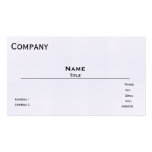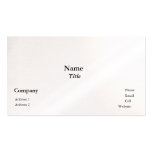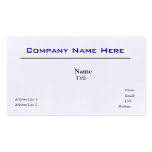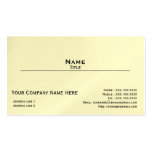Marketing campaigns should always start with a communication concept: a conceptual premise and framework that attracts attention and engages an audience in a way that penetrates each viewer’s mind, and captures the audience’s collective consciousness. It is the foundation of your brand story.
Developing an appropriate communication concept is the first step in creating your own distinctive marketing strategy: a strategy that employs the signature audio-visual-performance vocabulary needed to create an identifiable brand-associated campaign presentation. It is this presentation idiom that provides the communication tools needed to make your brand unique and memorable.
Technology Without Understanding is Like Coffee Without A Cup
The availability of sophisticated technology at relatively low prices has brought about a communication revolution. Websites, blogs, and social networking sites have given every marketing manager and entrepreneur access to communication options that were hereto reserved only for major corporations with million dollar budgets.
Unfortunately the ability to use easy-to-learn software applications and high tech digital hardware, combined with access to an exponentially increasing Internet audience, doesn’t mean the average businessperson has the necessary skills or understanding needed to communicate effectively within those available Internet channels.
Mommy, I Can Do It Myself!
Like the toddler who claims absolute self-sufficiency only to need mommy to come to the rescue, so too the do-it-yourself Web-media narcissist ultimately requires expert marketing communication help, if he or she wants to survive business-growing pains.
Having an e-commerce catalogue and lots of search engine optimized traffic doesn’t make your website an automated online bank machine that takes search engine traffic in one end and spits out money from the other. Having a blog doesn’t automatically make someone interesting or articulate, nor does owning a video camera make an entrepreneur a creative director or media star.
Marketing campaigns are about brands, not products or services, and they are definitely not about features. They are not about the owners, managers, or corporate directors who run things. No, they are about the story, the brand story, told in a compelling fashion so that it resonates and impacts the audience in some meaningful manner.
What we have in the Web is a communication venue open to any and all comers, most of whom lack the prerequisite understanding of how to communicate a branded message.
The Language of Branded Presentation
In the ‘Fast Company’ article ‘When Great Design Becomes Its Own Language’ Joe Duffy talks about
“visual and verbal linguistics.”
“The brands that have been designed in the best possible ways have their own proprietary language that tells their story, sets them apart from all the brands they compete with, and connects them in a very meaningful way to their audience.”
– Joe Duffy, graphic designer and AIGA Fellow
In order to achieve this kind of sophisticated communication you must understand the language of presentation. In a TED Conference speech, “The 4 Ways Sound Affects Us” given by sound expert Julian Treasure, he outlines how sound affects people physiologically, psychologically, cognitively, and behaviorally. The same can be said for visuals and performance, the communication elements that collectively with sound creates the language of brand presentation.
As Julian Treasure points out in his speech, “inappropriate retail soundscapes can reduce sales by 28%”. If it’s true in-store, it’s also true on the Web. Add to that inappropriate dialogue, visuals and performance techniques, and you have a branding, marketing, and sales disaster on your hands.
Core Concept Development
Management consultants will advise managers to create a Mission Statement in order to serve as a strategic guideline and tactical decision reference; but if that statement is filled with pointless platitudes and carefully constructed euphemisms, it is managerially useless and publicly inane.
The answer to the problem is to start with the one thing that makes you special. Marketing strategy, the high concept behind your business, and tactical implementation, the various advertising and promotional initiatives you choose to pursue, need to be based on that element of your business that makes you different.
The problem is most companies are not different; they sell the same things, in the same way, as dozens if not thousands of other companies. It is the job of companies like ours to help businesses develop a distinctive mark of differentiation, and come up with effective ways to implement it. In most cases the solution is found not in the product, service, or operational procedures, but in the way the emotional and psychological value proposition is presented.
Brand Story Sustainability
What we are developing here is a five-point plan for creating a sustainable brand for years to come; a methodology that creates a unique brand image rather than an also-ran product, or me-to service that becomes outdated with your competitor’s next upgrade or price cut.
So far we have four of the five elements: an Emotional and Psychological Value Proposition; a Mark of Differentiation; a Communication Concept, and a Presentation Language. The fifth element is your Concept Arc. The Concept Arc is how your campaign leads your audience to where you want them to be, and believe what you want them to believe?
Put another way, you have access to website traffic, an audience that is searching for something, it is the job of your brand story to reach deep into that audience’s psychological makeup, and give them a jolt of desire for what you offer. Your brand story scenario and characters vicariously represent this audience, and as your onscreen brand representatives move through the plotted arc from skepticism and mistrust to acceptance and desire, so too will your audience.
Your brand story can be built on any number of scenarios, including a quest, adventure, pursuit, rescue, escape, revenge, riddle, rivalry, underdog status, temptation, transformation, maturation, love, forbidden fruit, self-sacrifice, discovery, achievement, and conflict, (based on research scientist, Dr. Melvyn P Heyes discussion of plot at screenwritingscience.com).
A Web Audience Must…
Linda Cowgill in her book “The Art of Plotting: Add Emotion, Suspense, and Depth to Your Screenplay” states, “They [the audience] must be able to understand it [the presentation] with eyes and ears as they watch the scene unfold. … drama requires more than the sum of a number of incidents.” In the same way branding requires more than the sum of features.
If you haven’t already figured it out, the best way to implement such a brand strategy is with an ongoing Web-video campaign, but if you still have doubts consider that a Web audience must relate to your brand in a way that conjures life experience, values, attitudes, and preconceptions. That audience must identify with the characters and relate to their problems, concerns, issues, and/or needs. That audience must be affected and subconsciously influenced by the performance, as well as visual elements, sound design, and mnemonics. That audience must relate to and interpret the verbal and nonverbal messages on both a conscious and subconscious level. And an audience must be able to remember and recall the brand personality established so that it becomes a life style choice rather than a mere commodity purchase.
Business Cards
15% Off All Orders!
What it all comes down to is connecting with customers on a human level. Maybe you have substantial website traffic, or maybe you don’t, but whatever the number of visitors, what is important is that nobody who visits your website should leave without understanding what you do,
and remembering why they should care.







No comments:
Post a Comment